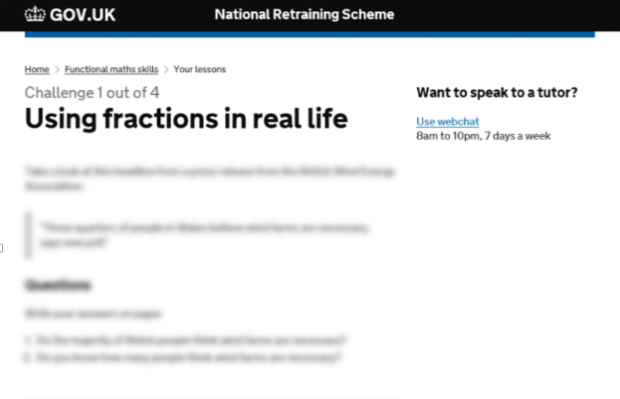
The National Retraining Scheme is a project to set up a new service for adults in low-skilled work, so they can retrain and find new and better jobs.
This is our first blog post about the scheme.
Work is changing
Technology is advancing further into our lives and changing the society we live and work in. Some estimates say that up to 1 in 3 jobs could be significantly affected as employers start using new technologies that reduce demand for more routine tasks.
The people in these jobs are less likely to have been to university or to have achieved higher vocational qualifications. They’re likely to be the people least able to find new and better jobs.
We think there’s a need for a retraining scheme that will help those people learn new skills and find a new job.
Governments have tried many schemes like this in the past, and not all of them have been successful. We want to make sure that this scheme works, so we’re doing things differently. We’re focusing on first understanding, and then meeting, the needs of the people and businesses who will use it.
Understanding users and context
Our research to date shows that the people who find themselves needing to retrain or learn new skills are likely to lack confidence, time, money or the motivation to start.
These people may have busy working and family lives that leave little space to go back to college. They may have poor digital skills, making it harder to use online learning services. They may not know what opportunities are available to them in their local area, and they may not be able to judge what skills they already have - and how they could apply them in a different role.
Trying to change career part-way through your working life is hard, even frightening. Especially when other people depend on you.
Fewer blunders, more user-centred design
Governments (both here and abroad) do not have great track records for delivering schemes like this.
Previous schemes have paid for training that people did not need, or trained people with skills that employers did not want. Twenty years ago, a service called Individual Learner Accounts was closed because of widescale fraud (see the book ‘Blunders of our Governments’ by Anthony King).
These examples are why we are trying to do something different this time. We need to understand what’s already in place and if that’s working for people.
We’ve set up a partnership with the Confederation of British Industry (CBI) and the Trades Union Congress (TUC) to help us develop this new scheme. With their help, we’ve been analysing how automation could impact our labour market, and how the adults skills system is currently serving the people most likely to be affected.
We’re using agile service design to develop both the policy and the scheme. This means focusing relentlessly on the needs of the people who will use it – both the people seeking retraining, and their current and potential future employers.
It means being prepared to try things that might fail, and not becoming obsessed with trying to get everything right first time. We aim to iterate and improve as we go.
Building a prototype

After two discovery phases, we're now running small-scale experiments to test our assumptions and learn about what our users really need. For example, the tests we've been doing focus on online learning and what type of support people might need.
One surprising finding from our first small scale experiment was that users were more reluctant to click and seek help than we expected. We’re doing more tests to find out why that was, and how our service design might need to adapt to reflect this.
This ongoing user research is important - we want to make sure we’re being really disciplined in figuring out our hypotheses, and the assumptions they depend on. By testing those assumptions regularly as the work progresses, we get a clearer picture of what works and what does not.
The best research happens directly with users
Most of our team are new to agile ways of working and user-centred design. We have been through an interesting, and at times challenging, transformation.
I do not think there’s anything new about being user-centred – it’s what good policy making has always been about. But we have often depended on intermediaries to tell us what users need - for example, talking to training providers rather than to trainees, when we should have done both.
By working with users in person, we have discovered things that we didn’t expect.
We have also identified blockers that we will need to remove. For example, by speaking to people who work variable shift patterns, we now understand more about the difficulties they would face when learning online.
Working in agile ways has introduced some new methods for organising ourselves, managing our work, and being ruthless in how we prioritise.
It has made us focus on what it is we need to learn at each stage, and not what we think we should build and deliver.
We’re really hopeful that working in this way will help us develop a scheme that meets the needs of users, and avoid some of the failures of the past.
Keep up to date with our blog by subscribing.
Recent Comments